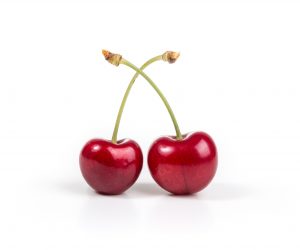
Top 12 Winter Vegetables to Eat & Grow (+ Benefits & Recipes)
Jillian Levy, CHHC via Dr. Axe – Eating seasonally benefits not only local farmers and the environment, but also the quality of your overall diet. For example, the Seasonal Food Guide tells us, “Seasonal food is fresher, tastier and more nutritious than food consumed out of season.” That means consuming fall and winter vegetables and fruit in the cold months and eating spring and summer fruit and vegetables in the warm months.
So when the weather gets cold and the local outdoor markets tend to shut down, what vegetables grow in the winter?
Examples of cold-weather crops that can usually be grown successfully even when it’s frigid outside include:
These are rich in nutrients, including vitamins C, A and K, plus fiber, that support a healthy gut and immune system during the coldest months of the year.
Using these veggies, you can make healthy and hearty recipes like crockpot soups, mashed potatoes, or roasted winter vegetables with herbs and olive oil. Read on to find out more about the best vegetables to purchase and grow during the winter, plus specific reasons why they make healthy additions to your diet.
What Are Winter Vegetables?
Winter vegetables are those that can grow even when the weather is very cold outside, including when there’s a frost. The benefit of opting to eat produce during the time of the year when it’s in season, including during the winter, include:
- Purchasing locally grown foods helps support local farms.
- It helps maintain farmland and open spaces in your community and benefits the overall ecosystem (especially if organically/sustainability grown).
- Locally grown and distributed food generates jobs in your area.
- The produce does not require long distances for transport, which has environmental benefits.
- The food tends to be more nutritious since it’s fresher, plus it usually tastes better.
Some types are considered root vegetables because they grow below the ground. Many of these veggies (such as carrots, potatoes and beets) are higher in starch and sugar than other varieties of veggies, but this actually helps them thrive in cold climates.
Some winter veggies actually develop a higher starch/sugar content when temps drop in order to help them withstand frost, which contributes to a delicious flavor (yet another reason to eat seasonally!).
Not all winter produce falls into the root vegetable category. Cruciferous veggies also grow in the winter, such as broccoli, kale, Brussel sprouts, cauliflower and cabbage.
Here are some of the more well-known vegetables that grow throughout the colder months of the year:
- Broccoli
- Kale
- Brussel sprouts
- Cauliflower
- Endive
- Cabbage
- Beets
- Celeriac
- Fennel
- Jerusalem artichokes
- Carrots
- Parsnips
- Radicchio
- Chicory
- Escarole
- Frisee lettuce
- Kohlrabi
- Leeks
- Shallots
- Rutabaga
- Turnips
- Radishes
- Garlic
- Winter squash varieties (including acorn, butternut, delicata, spaghetti and kabocha squash)
Top 12 Healthiest Winter Vegetables
What makes some winter vegetables excellent additions to your diet? Here are some of the benefits associated with our top 12 picks for winter vegetables:
1. Jerusalem Artichokes
Jerusalem artichokes (also called sunchokes) are a great source of prebiotics, including inulin, which help feed healthy probiotic bacteria in the gut. They are also high in essential minerals like potassium, iron and copper.
2. Broccoli
Broccoli is high in fiber, cancer-fighting compounds like glucosinolates, antioxidants such as carotenoids, chlorophyll, vitamins E and K, essential minerals, phenolic compounds, and more.
3. Kale
Kale is packed with flavonoid antioxidants, including quercetin and kaempferol; plus vitamins A, C and K; B vitamins; calcium; copper; manganese; potassium; and magnesium.
4. Brussels Sprouts
Not only do Brussels sprouts taste great when roasted, but they are full of antioxidants that help fight cancer, fiber, calcium, potassium, folate, vitamin C and vitamin K.
5. Cauliflower
Cauliflower makes an excellent substitute for potatoes in low-carb recipes and is high in essential vitamins, carotenoids, fiber, soluble sugars, minerals like folate and potassium, and phenolic compounds. Various antioxidants found in cauliflower — including beta-carotene, beta-cryptoxanthin, caffeic acid, cinnamic acid, ferulic acid, quercetin, rutin and kaempferol — can help reduce oxidative stress in the body.
6. Escarole
Like other dark greens, escarole is low in calories but high in fiber, vitamin C, vitamin A, calcium, vitamin K and iron. It’s also a great source of several antioxidants and polyphenols, including caffeic acid, vitamin C and flavonols, which promote healthy aging.
7. Cabbage
All varieties of cabbage are low in calories but high in filling fiber (including insoluble fiber, which supports digestive health), as well as vitamin C, vitamin K, manganese and antioxidants, such as anthocyanins.
8. Beets
Beets are unique because they’re one of the best dietary sources of nitrates, which help promote healthy blood flow and blood pressure. They are also a great source of fiber, folate, manganese, potassium, iron and vitamin C, not to mention protective compounds including betanin and vulgaxanthin, which fight inflammation.
9. Carrots
Adding carrots to your diet is a smart way to up your intake of vitamin A/beta-carotene, which supports healthy skin and vision/eye health. Carrots are also high in antioxidants, including lutein and zeaxanthin, which further support healthy aging and fight free radical damage, as well as vitamin K, potassium, thiamine, niacin and fiber.
10. Fennel
Fennel is a veggie known for promoting digestive health thanks to the presence of unique compounds that give this veggie anti-inflammatory, antimicrobial, antiviral, anti-tumor and antispasmodic properties. Fennel bulb contains a number of disease-fighting phenolic compounds, including bioflavonoids, phenolic acids, tannins, coumarins and hydroxycinnamic acids, as well as potassium, vitamins C and A, and B vitamins.
11. Winter Squash
Nutritionally, winter squash has many things in common with sweet potatoes, including being high in vitamin A (alpha-carotene and beta-carotene), vitamin C, vitamin B6, magnesium, fiber, antioxidant and anti-inflammatory compounds, and polysaccharide carbohydrates.
12. Chicory
Chicory root is most often used to make herbal tea that has digestive-soothing effects. It can make a great replacement for coffee and helps regulate loss of appetite, upset stomach, constipation and bloating. It’s also high in fiber and acts as a prebiotic — plus it supplies manganese and B vitamins.
How to Add Them to Your Diet
Looking for simple ways to add more fall and winter vegetables to your meals? Several ideas include:
- Making roasted winter vegetables simply by roasting them in a 400 degree oven for about 30 minutes with olive oil, salt and pepper
- Making vegetable soup or stews
- Fixing up “faux potatoes” using turnips or cauliflower
- Incorporating cruciferous veggies like broccoli and cauliflower into grain-free “pizza” crusts
- Adding chopped veggies like carrots, kale, shallots and leeks into homemade veggie burgers or omelets
- Stuffing winter squash with quinoa or other whole grains
- Adding raw kale to smoothies
- Making winter salads with leafy greens and roasted veggies
- Sauteeing greens with garlic and olive oil
Give these healthy winter vegetable recipes a try:
- Creamy Broccoli Soup Recipe
- Raw Superfood Carrot Salad Recipe
- Roasted Brussels Sprouts with Apples & Pecans Recipe
- Spicy Kale Chips Recipe
- Roasted Beets Recipe with Balsamic Rosemary Glaze
How to Grow
Looking for a list of winter vegetables to grow in your own garden? Some of the easiest veggies to grow in home gardens throughout the coldest months of the year (usually November through March in the Northern Hemisphere) include:
- carrots
- turnips
- cabbage
- kale
- onions/shallots
- garlic
- squash
Here are tips for sustaining a successful veggie garden throughout the winter:
- According to Savvy Gardening, “The key to a successful winter harvest is to know the right vegetables to grow in winter and pair them with the right season extenders. That means growing cold tolerant crops in structures like cold frames, mini hoop tunnels, greenhouses, or polytunnels.”
- Start with just a few crops and a cold frame or mini hoop tunnel. Some also like to add a layer of polyethylene film, fabric or flannel on top for extra protection in very cold climates.
- Most vegetables to grow in winter are planted from mid-summer to early autumn. Those that are less tolerant of the cold should be picked by December, while others can last longer.
- If you’re looking for veggies with a long growing season, try onions, shallots and garlic, which are simple to grow nearly year-round.
- Carrots, parsnips and beets are all good to grow in the cold since they grow underground and benefit from a layer of protection. Mulch and fabric can also be placed on top of the soil to keep it insulated. These veggies do best when planted in late summer.
- Try creating a garden bed for greens using cold frames and tunnels, including spinach, escarole, kale and Swiss chard, which can be sowed in early autumn and will keep producing tender young leaves throughout the winter. If you have a greenhouse you can also experiment with many other greens during the winter, including mustard greens, lambs lettuce, arugula, mache, and “Asian greens” such as pak choi, tatsoi and mizuna.
- Winter squashes grow best in areas where it’s not very cold in the winter. The seeds are planted right in the ground, such as in rows or hills, or placed into aged manure or dug deep into the ground. They need a lot of space and water to thrive and have a long growing season. They are usually planted in late summer.
Risks and Side Effects
Although most people can benefit from adding a variety of winter vegetables to their diets, those with certain medical conditions may have to limit or avoid some varieties due to the presence of certain types of carbohydrates or minerals.
For example, people who are sensitive to FODMAPs may need to limit the amount of cruciferous veggies they consume, and those with kidney-related issues may need to watch their potassium intake from root veggies due to the effects on kidney function, especially if they take medications to control their blood pressure.
Some winter veggies, such as beets and squash, are also a bit higher in carbs and sugar compared to non-starchy veggies, so they may need to be eaten in only small amounts if someone is closely watching blood glucose levels or following a low-carb diet or keto diet.
Conclusion
- Winter vegetables are those that grow in the cold months of the year, usually from November through March. Some of the most popular types include cruciferous veggies like broccoli and Brussels sprouts, greens like escarole and kale, beets, onions, carrots, fennel, and winter squash.
- Depending on the specific kind, benefits of adding these veggies to your diet include supplying you with vitamins C, A and K for immune support; potassium and magnesium; fiber; prebiotics; and various antioxidants.
- Some ideas for preparing them at home include making roasted vegetables, veggie soup and stews, omelets, veggie burgers, stir-fries, and “faux potatoes.”
- Eating seasonally also benefits local farmers, and the produce is usually fresher, tastier and more nutritious than food consumed out of season.
To read the original article click here.
For more articles from Dr. Axe click here.






